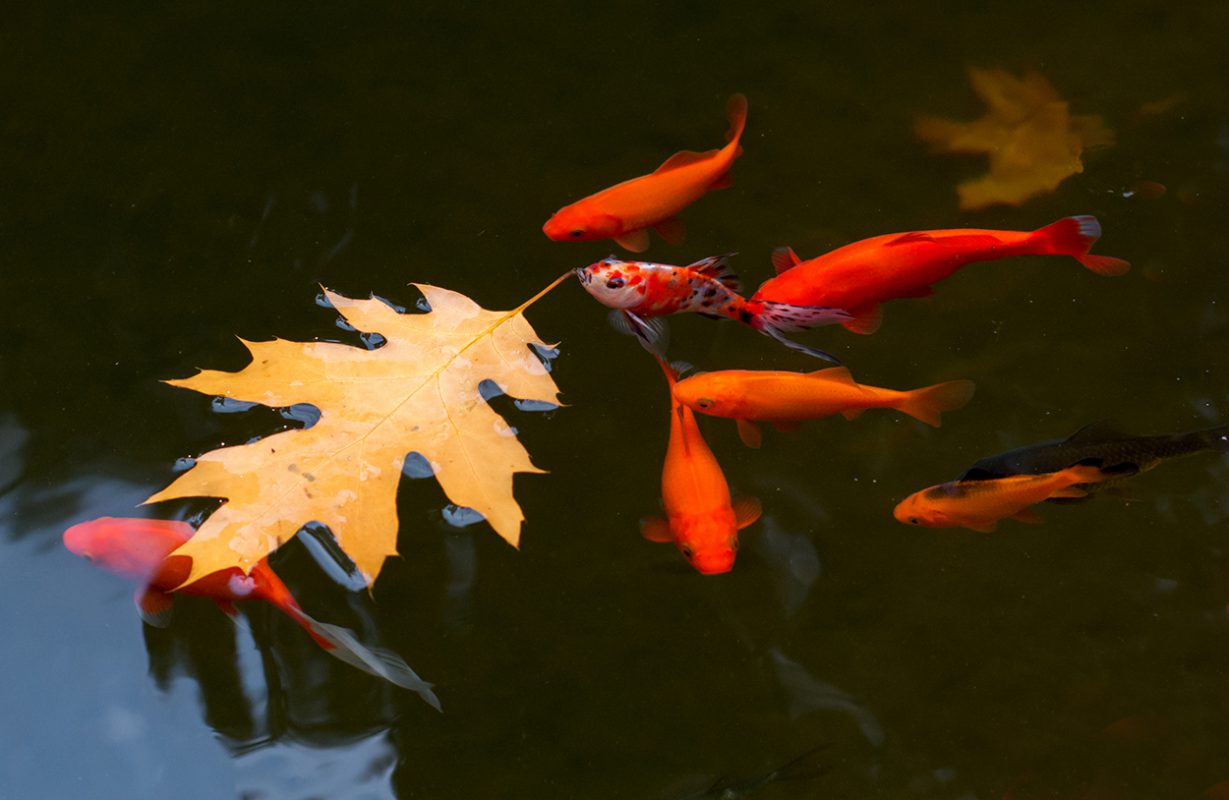In this article, Tetra explores ten fish species that can be kept in domestic garden ponds. The following profiles outline their lifespans and sizes, the size of pond you will need and the best food to give them, as well as key facts that you’ll need to take into account when keeping these fish.
Goldfish (Carassius auratus auratus)

- Size: approx. 30 cm
- Age: 15–20 years
- Suitable for: Beginners and ponds of 2,000 litres and more
- Preferred food: Omnivore, but prefer to eat insect eggs and larvae, plant material and microorganisms such as water fleas
- Best food products: Tetra Goldfish Mini Pellets, Tetra Goldfish Mix, Tetra Pond Flakes, Tetra Colour Sticks
Goldfish originally come from Japan and China. With many colour variations and breeds, they are a true pond classic. These freshwater fish are one of the most traditional choices for a domestic pet. These days, there are more than 100 different colours and cultivated varieties, including shubunkins, sarasas, yellow goldfish and black goldfish. Goldfish feel most at home in a group of at least five. It’s worth remembering that they can multiply significantly in a short time and the pond can quickly become overcrowded.
Koi (Cyprinus carpio)
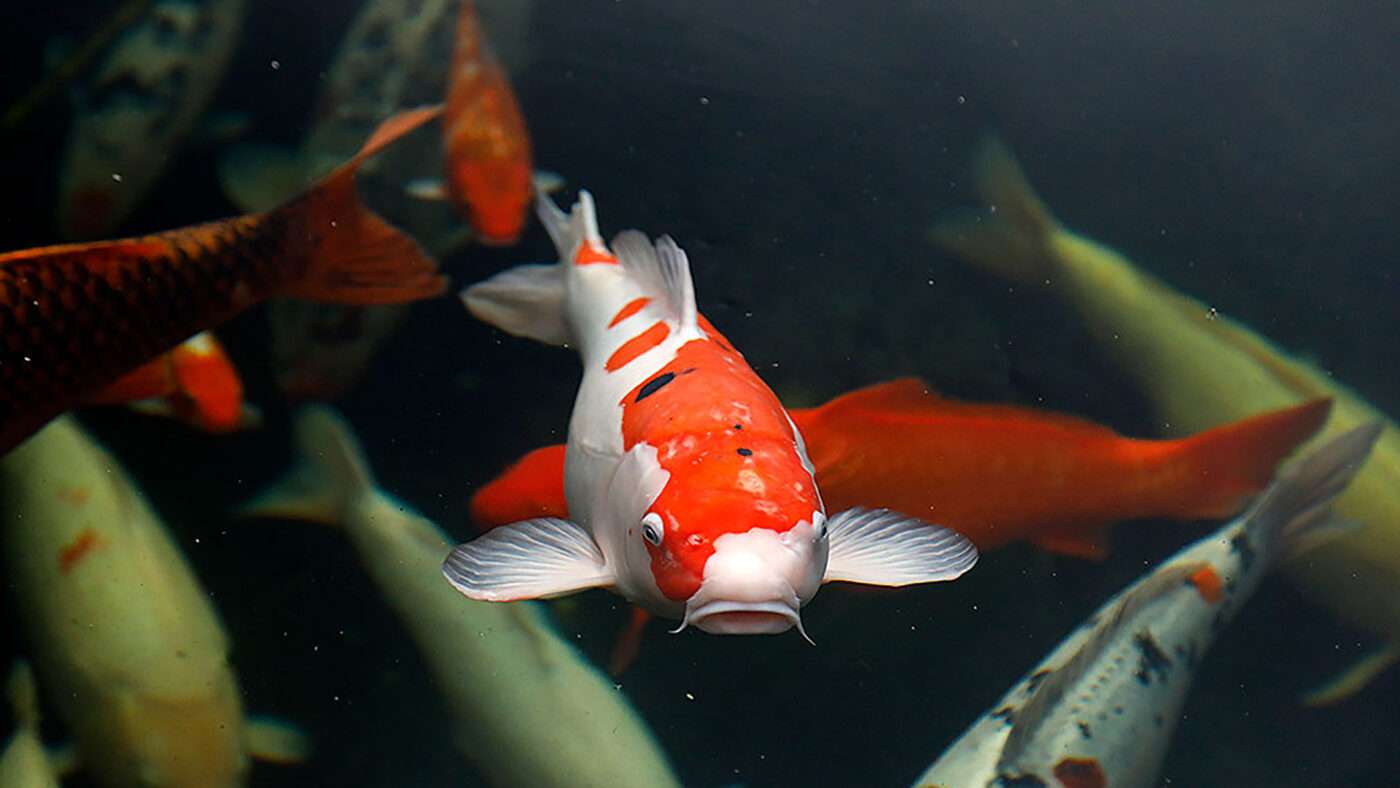
- Size: up to 1 m
- Age: 40–60 years
- Suitable for: Experienced aquarists and ponds of 10,000 litres and more
- Preferred food: Omnivore, but prefer to eat insects, their eggs and larvae, crustaceans and algae.
- Best food products: Tetra Koi Sticks, Tetra Koi Colour & Growth Sticks
The majestic nishikigoi, also known as the koi or koi carp, is probably one of the most famous and popular pond fish alongside the goldfish. Presumed to have originated in Asia, this species now has more than 100 varieties primarily distinguished by their different colours. Koi live in groups, so it’s best to keep at least 10 conspecifics (depending on the size of the pond). The rule of thumb is 3 cubic metres per fish, with a minimum pond depth of 1.30 m – the depth at which koi hibernate.
You can find detailed information on koi in this blog article: Koi: majestic pond inhabitants – Tetra Aquatics blog
Golden orfe (Leuciscus idus)
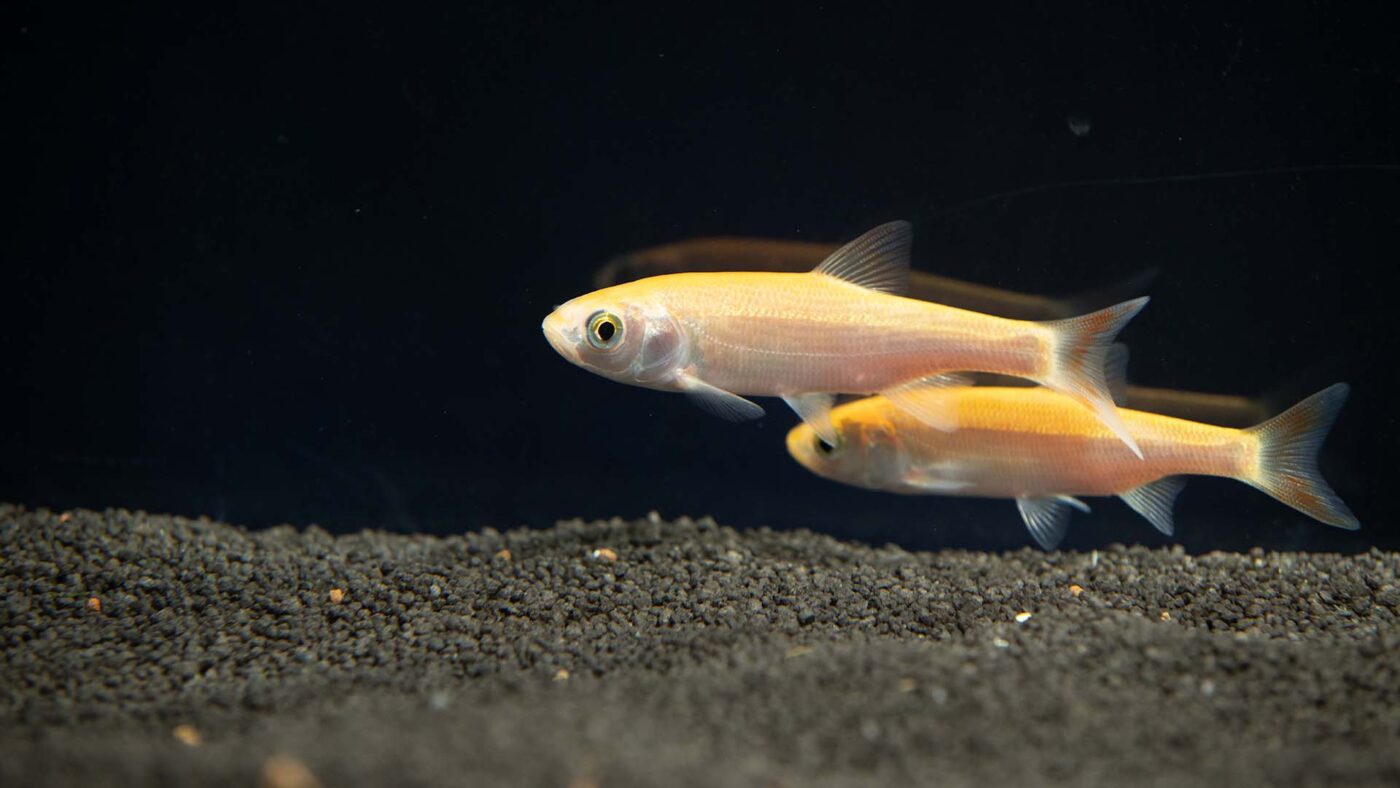
- Size: up to 50 cm
- Age: 15–20years
- Suitable for: Experts and ponds of 5,000 litres and more
- Preferred food: Insect larvae, snails and crustaceans, spawn and fry of other pond fish
- Best food products: Tetra Pond Sticks, Tetra Pond Flakes, Tetra Pond Pellets, Tetra Pond Variety Sticks
The golden orfe is a cultivated breed of the wild orfe or ide, which is common in Central and Eastern Europe all the way up to southern Scandinavia. These nimble swimmers feel most at home in groups of at least six. They are ideal for stabilising the number of other pond inhabitants because they also eat the eggs and fry of other species. Golden orfe are extremely sensitive to impurities in the water, so we recommend that you check the water parameters regularly and make adjustments as required.
Bitterling (Rhodeus sericeus amarus)

- Size: up to 9 cm
- Age: approx. 5 years
- Suitable for: Beginners and experienced aquarists and all ponds of 2,000 litres and more
- Preferred food: Fry, larvae, algae and small crustaceans; adults eat a mainly vegetarian diet of algae and soft plant material
- Best food products: Tetra Pond Flakes, Tetra Pond Pellets Mini
The bitterling is a small, silvery fish. It may seem unremarkable at first, but as a voracious algae eater, it can play an important role in ponds. Native to vast swathes of Europe, it lives in a form of symbiosis with river mussels such as the painter’s mussel. Bitterling larvae develop in the pallial cavities of the mussels, and don’t leave until they are around 1 cm in size. Bitterlings are sociable fish that feel at home in small groups of four. They mainly live in the shallow water of the pond and prefer sparse vegetation.
Rudd (Scardinius erythrophthalmus)
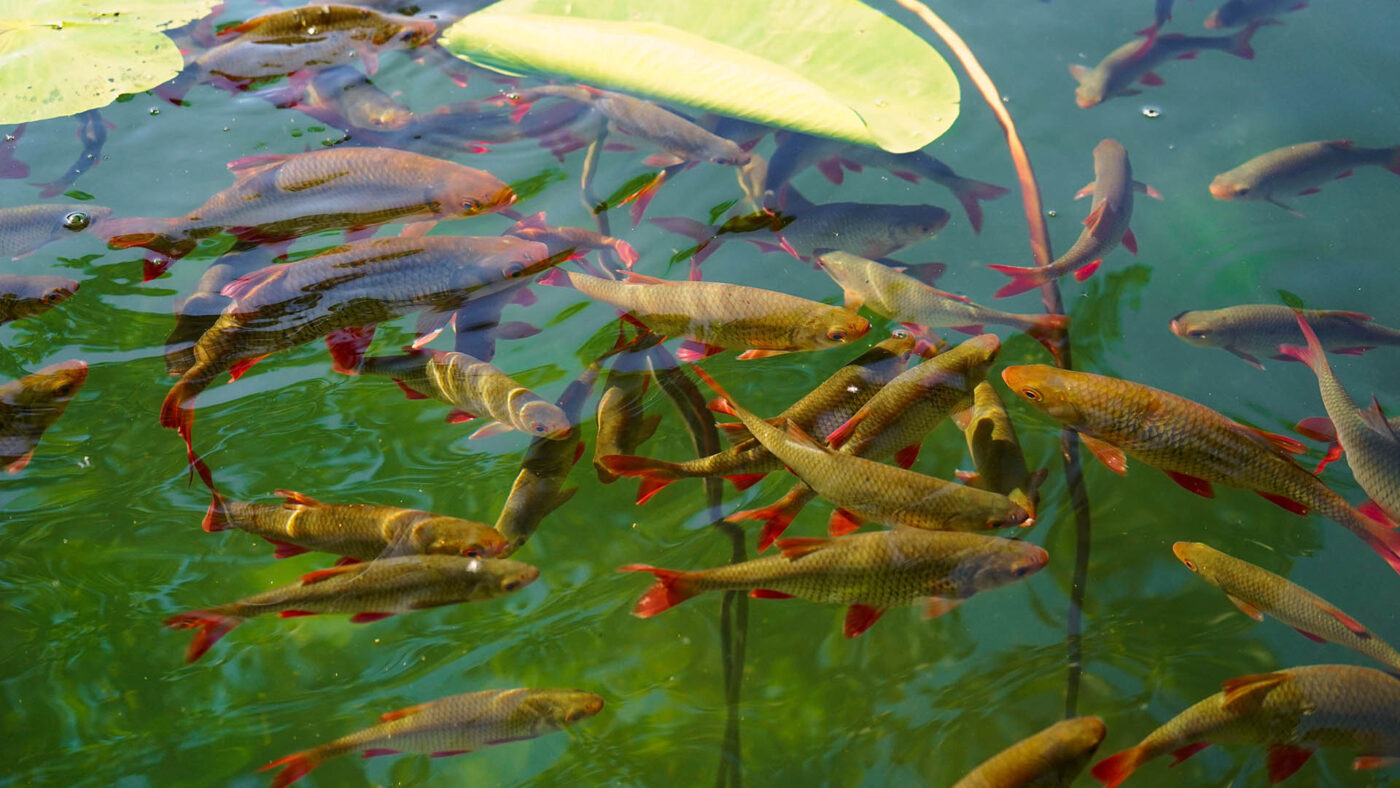
- Size: 20–30 cm
- Age: up to 20 years
- Suitable for: Experts and ponds of 5,000 litres and more
- Preferred food: Mainly algae and aquatic plants, occasionally worms and invertebrates for variety
- Best food products: Tetra Pond Sticks, Tetra Pond Flakes, Tetra Pond Pellets, Tetra Pond Variety Sticks
The rudd is a peaceful and sociable fish that likes to live in groups in the shallow water of the pond. It prefers densely planted areas with a sandy or muddy substrate. If you decide to keep this European fish, then you need to be careful: make sure to use mostly large-leaved plants or grasses to prevent all the plants in the pond from falling victim to hungry rudd.
Gudgeon (Gobio gobio)

- Size: max. 15 cm
- Age: 5–8 years
- Suitable for: Experts and ponds of 5,000 litres and more
- Preferred food: Insect larvae, molluscs and crustaceans
- Best food products: Tetra Pond Flakes, Tetra Pond Sterlet Sticks
The gudgeon is common throughout Western and Northern Europe and can be found in both fast-flowing and standing water. Its mouth faces downwards and it lives exclusively in the bottom water layer, rooting in the sandy or gravelly soil for live prey. To ensure gudgeons feel at home in the pond in the long term, a flow pump is required to prevent dead zones – areas low in oxygen – on the pond floor.
Sunbleak (Leucaspius delineatus)
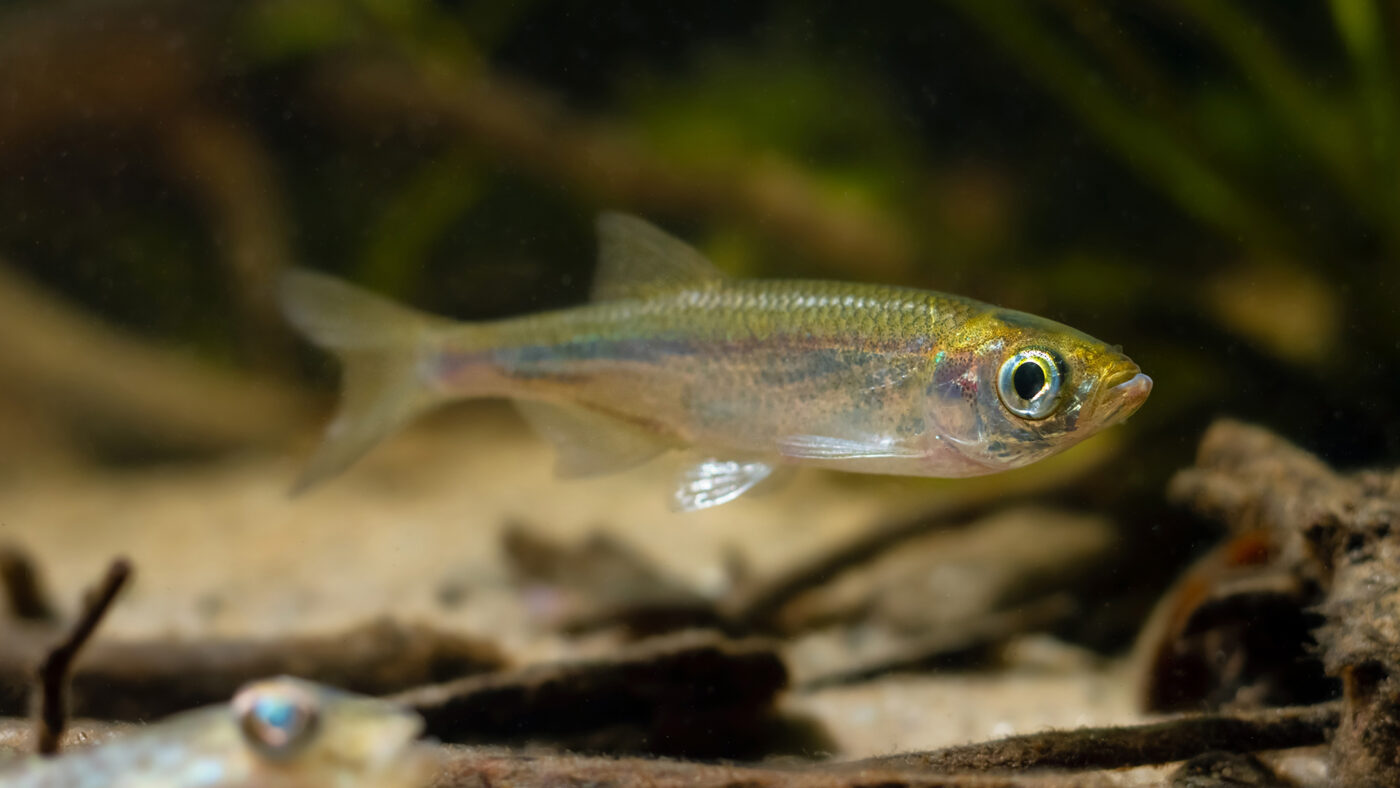
- Size: up to 9 cm
- Age: max. 4 years
- Suitable for: Beginners and experts and ponds up to 5,000 litres. Also suitable for larger ponds in principle. Due to their small size, in a larger pond they will quickly become fodder for larger fish.
- Preferred food: Algae and plankton, fish and amphibian spawn, and insects from the surface of the water
- Best food products: Tetra Pond Flakes, Tetra Pond Pellets Mini
Sunbleaks are common in Central Europe and prefer to live in shoals of at least 10 in the upper water layer of ponds. They also feel at home among plants in the shallow water. Although sunbleaks tends to avoid strong currents, a filter should be used in the pond to ensure sufficient aeration and good water quality. Sunbleaks are peaceful and get along easily with species of similar sizes, such as bitterlings and common minnows. In larger ponds, they quickly fall victim to larger fish.
Common minnow (Phoxinus phoxinus)

- Size: approx. 4–7 cm
- Age: up to 4 years
- Suitable for: Beginners and experts and ponds up to 5,000 litres. Also suitable for larger ponds in principle. Due to their small size, in a larger pond they will quickly become fodder for larger fish.
- Preferred food: Insect larvae, fish spawn, small crustaceans and algae
- Best food products: Tetra Pond Flakes, Tetra Pond Pellets Mini
The common minnow can be found across vast swathes of Europe and Northern Asia. A small shoal fish, it feels particularly at home in groups of at least five. The common minnow is very active and so needs plenty of free space to swim around. It also needs plenty of places to hide, such as rocks and roots. This species prefers fast-flowing water that is well aerated.
Golden tench (Tinca tinca)
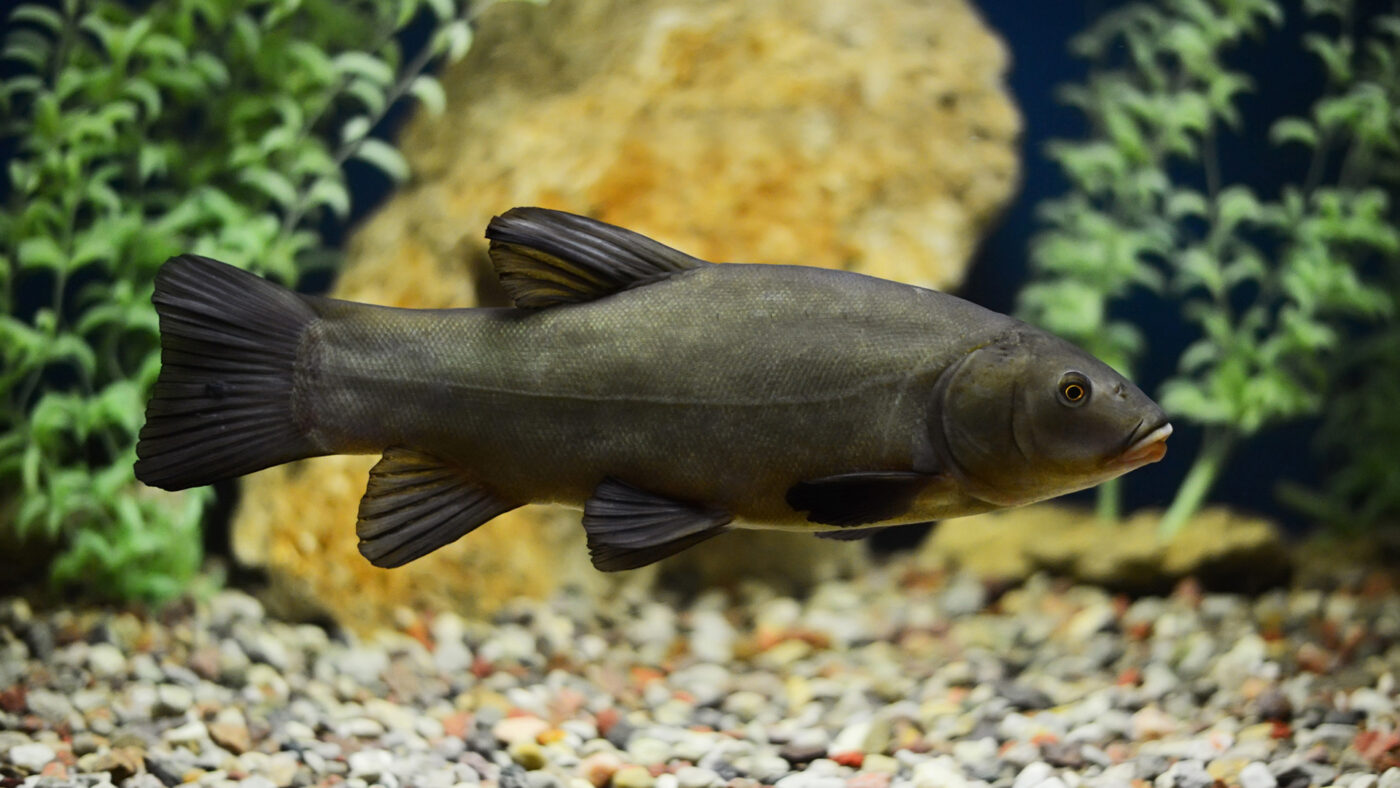
- Size: max. 40 cm
- Age: up to 20 years
- Suitable for: Experienced aquarists and experts, and ponds of 5,000 litres and more
- Preferred food: Omnivore, mainly eats algae, insects and their larvae, worms and crustaceans
- Best food products: Tetra Pond Sticks, Tetra Pond Flakes, Tetra Pond Pellets, Tetra Pond Colour Sticks
Golden tench are native to Central Europe and tend to live in deeper water layers. These gold-red fish tend to spend their time in sandy or gravel-covered soil searching for live prey. It can often take a long time to get them used to sharing pond food because they tend to be shy and to be active at dusk and night-time. The pond should be at least one meter in depth so that golden tench have plenty of places to hibernate in the winter.
Grass carp (Ctenopharyngodon idella)

- Size: up to approx. 1.30 m
- Age: approx. 20 years
- Suitable for: Experienced aquarists and ponds of 10,000 litres and more
- Preferred food: Plants, particularly soft aquatic plants and reed shoots
- Best food products: Tetra Pond Sticks, Tetra Pond Flakes, Tetra Pond Pellets
The grass carp is also known as the “White Amur” and originally comes from China. This species is known as the gardener of the pond and people like to keep them to control the growth of reeds, for example. These olive-green fish prefer large, warm ponds. They can easily cope with water temperatures of up to 30°C – in fact, they don’t start to spawn until the temperature reaches 20°C. This makes it easy to control the grass carp population in a domestic pond. As this large species requires a lot of oxygen, you should make sure that your pond doesn’t completely freeze in the winter.
You want to know how to best prepare your pond for the winter? Here you can read everything you need to know on how to winter proof your pond your pond in autumn: Winter-proofing your pond
